Intro
Discover effective newborn jaundice treatments, including phototherapy and bilirubin testing, to manage infant jaundice symptoms and prevent complications like kernicterus, ensuring healthy baby development and safe recovery from hyperbilirubinemia.
Newborn jaundice is a common condition that affects many infants in the first few weeks of life. It is characterized by a yellowish discoloration of the skin and eyes, caused by a buildup of bilirubin in the blood. While it can be a cause for concern for new parents, there are several effective treatments available to help manage and alleviate the symptoms of newborn jaundice. In this article, we will delve into the world of newborn jaundice treatments, exploring the various options available, their benefits, and what parents can expect during the treatment process.
Newborn jaundice is a relatively common condition, affecting approximately 60% of full-term infants and 80% of premature babies. It typically appears in the first few days of life and can be caused by a variety of factors, including the breakdown of red blood cells, liver immaturity, and breastfeeding. While mild cases of jaundice may not require treatment, more severe cases can lead to serious complications, such as kernicterus, a form of brain damage caused by high levels of bilirubin. Therefore, it is essential to seek medical attention if parents suspect their baby has jaundice.
The importance of treating newborn jaundice cannot be overstated. If left untreated, high levels of bilirubin can cause serious health problems, including seizures, cerebral palsy, and even death. However, with prompt and effective treatment, most babies with jaundice can make a full recovery. In fact, studies have shown that early treatment can significantly reduce the risk of long-term complications and improve outcomes for affected infants. As we will explore in this article, there are several treatment options available, ranging from simple phototherapy to more invasive procedures, such as blood transfusions.
Newborn Jaundice Treatment Options
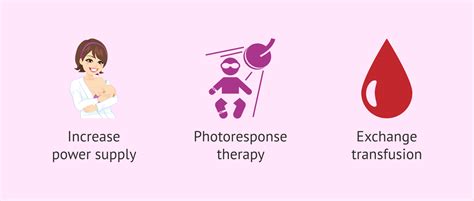
When it comes to treating newborn jaundice, there are several options available, each with its own benefits and risks. The choice of treatment depends on the severity of the jaundice, the age of the baby, and the underlying cause of the condition. Here are some of the most common treatment options for newborn jaundice:
- Phototherapy: This is the most common treatment for newborn jaundice and involves exposing the baby to special lights that help break down bilirubin in the skin. Phototherapy is usually given in a hospital setting, where the baby is placed under a special light that emits a specific wavelength of light.
- Exchange Transfusions: In severe cases of jaundice, a blood transfusion may be necessary to remove bilirubin from the blood. This involves replacing the baby's blood with donor blood that has lower levels of bilirubin.
- Intravenous Immunoglobulin (IVIG): This treatment involves giving the baby an infusion of antibodies that help reduce the levels of bilirubin in the blood.
- Medications: In some cases, medications such as phenobarbital may be given to help reduce the levels of bilirubin in the blood.
How Phototherapy Works
Phototherapy is a non-invasive and painless treatment that uses light to break down bilirubin in the skin. The light is typically given in a hospital setting, where the baby is placed under a special light that emits a specific wavelength of light. The light is usually blue or white and is shone on the baby's skin for several hours a day. The light helps to convert the bilirubin into a water-soluble form that can be easily excreted in the urine.Benefits of Newborn Jaundice Treatments
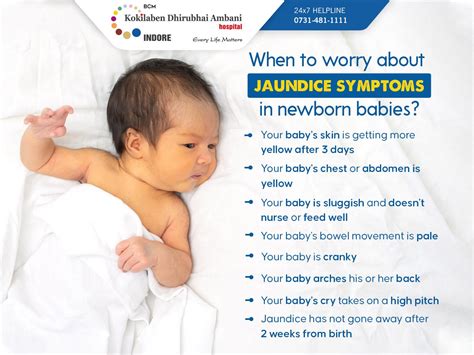
The benefits of treating newborn jaundice are numerous. Early treatment can help reduce the risk of long-term complications, such as kernicterus, and improve outcomes for affected infants. Some of the benefits of newborn jaundice treatments include:
- Reduced risk of kernicterus: Early treatment can help reduce the risk of kernicterus, a form of brain damage caused by high levels of bilirubin.
- Improved outcomes: Treatment can help improve outcomes for babies with jaundice, reducing the risk of long-term complications and improving overall health.
- Increased safety: Treatment can help reduce the risk of serious complications, such as seizures and cerebral palsy.
- Reduced anxiety: Treatment can help reduce anxiety and stress for parents, who can be reassured that their baby is receiving the best possible care.
What to Expect During Treatment
During treatment, parents can expect their baby to be closely monitored by medical staff. The baby's bilirubin levels will be regularly checked, and the treatment will be adjusted as needed. Here are some things to expect during treatment:- Regular monitoring: The baby's bilirubin levels will be regularly checked to ensure that the treatment is working.
- Adjustments to treatment: The treatment may need to be adjusted as needed, depending on the baby's response to treatment.
- Follow-up appointments: Parents can expect to have follow-up appointments with their baby's doctor to check on the baby's progress and adjust the treatment as needed.
Newborn Jaundice Prevention
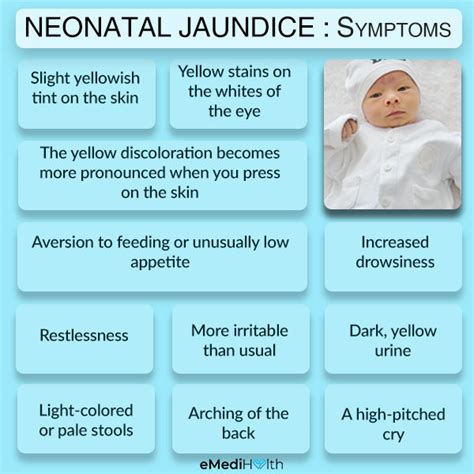
While it is not always possible to prevent newborn jaundice, there are some steps that parents can take to reduce the risk. Here are some tips for preventing newborn jaundice:
- Breastfeeding: Breastfeeding can help reduce the risk of jaundice, as it helps to remove bilirubin from the blood.
- Frequent feedings: Frequent feedings can help stimulate bowel movements, which can help remove bilirubin from the body.
- Monitoring: Parents should monitor their baby's stool and urine output, as well as their overall health, to catch any signs of jaundice early.
Common Causes of Newborn Jaundice
Newborn jaundice can be caused by a variety of factors, including:- Breakdown of red blood cells: The breakdown of red blood cells can cause a buildup of bilirubin in the blood.
- Liver immaturity: The liver may not be mature enough to process bilirubin, leading to a buildup in the blood.
- Breastfeeding: Breastfeeding can cause a buildup of bilirubin in the blood, especially in the first few days of life.
Newborn Jaundice Diagnosis
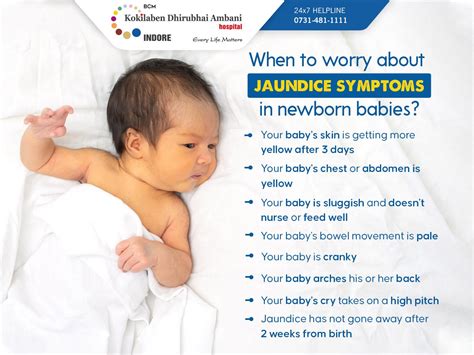
Diagnosing newborn jaundice typically involves a physical examination and a series of tests, including:
- Visual examination: A doctor will examine the baby's skin and eyes to look for signs of jaundice.
- Bilirubin test: A blood test will be done to measure the levels of bilirubin in the blood.
- Ultrasound: An ultrasound may be done to check for any underlying conditions that may be causing the jaundice.
Understanding Bilirubin Levels
Bilirubin levels are an important indicator of the severity of newborn jaundice. Here are some things to know about bilirubin levels:- Normal levels: Normal bilirubin levels are typically below 5 mg/dL.
- Elevated levels: Elevated levels of bilirubin can indicate jaundice, and may require treatment.
- High levels: High levels of bilirubin can indicate a more severe case of jaundice, and may require more intensive treatment.
Newborn Jaundice Complications
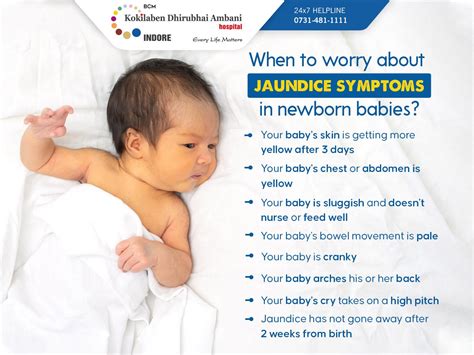
While newborn jaundice is typically a mild condition, it can lead to serious complications if left untreated. Some of the potential complications of newborn jaundice include:
- Kernicterus: Kernicterus is a form of brain damage caused by high levels of bilirubin.
- Seizures: High levels of bilirubin can cause seizures in newborns.
- Cerebral palsy: Untreated jaundice can increase the risk of cerebral palsy.
Long-Term Effects of Newborn Jaundice
The long-term effects of newborn jaundice can vary depending on the severity of the condition and the effectiveness of treatment. Some potential long-term effects include:- Cognitive impairment: Untreated jaundice can lead to cognitive impairment and learning disabilities.
- Hearing loss: High levels of bilirubin can cause hearing loss in newborns.
- Vision problems: Untreated jaundice can lead to vision problems, including blindness.
Conclusion and Next Steps
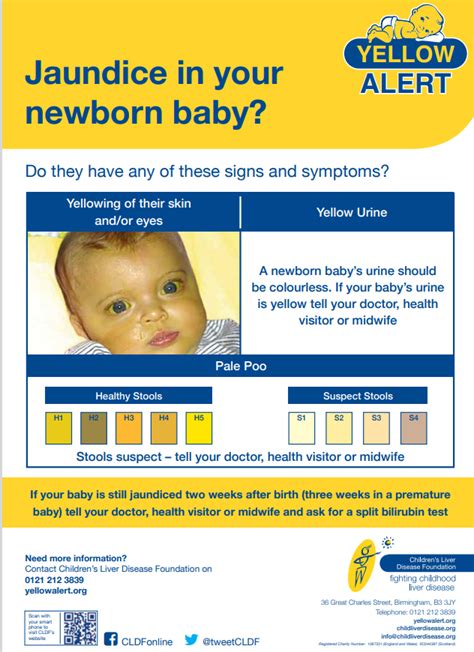
In conclusion, newborn jaundice is a common condition that requires prompt and effective treatment to prevent long-term complications. By understanding the causes, symptoms, and treatment options for newborn jaundice, parents can take an active role in their baby's care and ensure the best possible outcomes. If you suspect your baby has jaundice, it is essential to seek medical attention immediately. With the right treatment and care, most babies with jaundice can make a full recovery and go on to lead healthy and happy lives.
We hope this article has provided you with a comprehensive understanding of newborn jaundice and its treatment options. If you have any further questions or concerns, please do not hesitate to reach out to your healthcare provider. Additionally, we invite you to share your experiences and thoughts on newborn jaundice in the comments section below. Your input can help others who may be going through a similar situation.
What is newborn jaundice?
+Newborn jaundice is a common condition that affects many infants in the first few weeks of life, characterized by a yellowish discoloration of the skin and eyes, caused by a buildup of bilirubin in the blood.
What are the symptoms of newborn jaundice?
+The symptoms of newborn jaundice include a yellowish discoloration of the skin and eyes, dark urine, and pale stools. In severe cases, babies may become lethargic, irritable, or have difficulty feeding.
How is newborn jaundice diagnosed?
+Newborn jaundice is typically diagnosed through a physical examination and a series of tests, including a bilirubin test, ultrasound, and visual examination.
What are the treatment options for newborn jaundice?
+The treatment options for newborn jaundice include phototherapy, exchange transfusions, intravenous immunoglobulin (IVIG), and medications. The choice of treatment depends on the severity of the jaundice, the age of the baby, and the underlying cause of the condition.
Can newborn jaundice be prevented?
+While it is not always possible to prevent newborn jaundice, there are some steps that parents can take to reduce the risk, including breastfeeding, frequent feedings, and monitoring the baby's stool and urine output.
